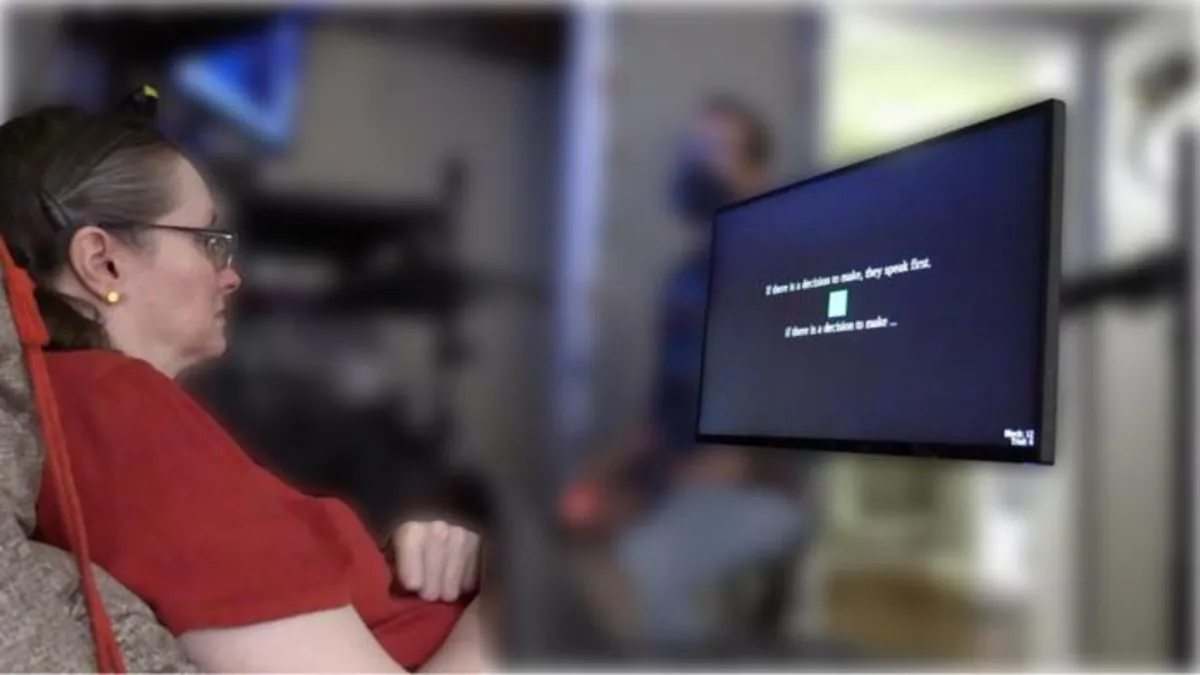
Scientists have made a groundbreaking discovery by pinpointing brain activity associated with inner speech—the silent monologue that occurs in people's minds. In a study published on August 14 in the Cell Press journal Cell, researchers successfully decoded this inner monologue on command, achieving an impressive accuracy rate of up to 74%. These findings hold significant potential for individuals who are unable to speak audibly, suggesting that brain-computer interface (BCI) technologies could facilitate communication by translating inner thoughts when a participant verbalizes a password mentally.
Lead author Erin Kunz from Stanford University expressed the importance of this research, stating, “This is the first time we’ve managed to understand what brain activity looks like when you just think about speaking.” For individuals with severe speech and motor impairments, the ability of BCIs to decode inner speech could lead to a more natural and accessible means of communication.
Brain-computer interfaces (BCIs) have emerged as revolutionary tools designed to assist people with disabilities. These systems utilize sensors implanted in brain regions responsible for movement to decode neural signals that correspond to actions, such as moving a prosthetic limb. Research has already demonstrated that BCIs can interpret attempted speech in individuals with paralysis. When these users engage the muscles necessary for speech, the BCIs can decipher their brain activity and transcribe their intended words, even if the spoken output is unintelligible.
While BCI-assisted communication is significantly faster than older technologies—like systems that track eye movements to type—attempting to speak can still be a strenuous and slow process for those with limited muscle control. This prompted researchers to explore whether BCIs could decode inner speech, thereby reducing the physical effort required for communication.
The research team, including co-first author Benyamin Meschede-Krasa, recorded neural activity using microelectrodes implanted in the motor cortex, the brain region responsible for speech, in four participants suffering from severe paralysis due to conditions like amyotrophic lateral sclerosis (ALS) or brainstem strokes. Participants were instructed to either attempt speech or to imagine articulating a set of words. The study revealed that both attempted and inner speech activate overlapping brain regions and produce similar neural activity patterns; however, inner speech generally exhibited a weaker activation magnitude.
Using the data gathered from inner speech, the researchers trained artificial intelligence models to interpret the imagined words. In a proof-of-concept demonstration, the BCI was able to decode imagined sentences from a vocabulary of up to 125,000 words with a remarkable accuracy rate of 74%. Furthermore, the BCI detected additional inner speech that participants were not specifically instructed to verbalize, such as numbers while counting pink circles on a screen.
The researchers discovered that while attempted and inner speech generate comparable patterns of neural activity in the motor cortex, they are distinct enough to be recognized separately. Senior author Frank Willett noted that this differentiation can be utilized to train BCIs to disregard inner speech when necessary. For users who may prefer inner speech as a quicker communication method, the team demonstrated a password-controlled mechanism. This system requires a specific keyword to unlock inner speech decoding, ensuring that unauthorized thoughts are not processed. In the experiment, participants could think of the phrase “chitty chitty bang bang” to activate the inner-speech decoding, with the system recognizing the password with over 98% accuracy.
While current BCI systems face challenges in decoding free-form inner speech without significant errors, the researchers remain optimistic. They believe that future advancements in BCI technology, incorporating more sensors and sophisticated algorithms, will enhance the ability to decode natural thought processes more accurately.
“The future of BCIs is bright,” Willett stated. “This work gives real hope that speech BCIs can one day restore communication that is as fluent, natural, and comfortable as conversational speech.” The implications of these findings are vast, potentially transforming the way individuals with severe speech impairments communicate.
This important research was supported by various organizations, including the Assistant Secretary of Defense for Health Affairs, the National Institutes of Health, and the National Science Foundation, among others. The study, titled “Inner speech in motor cortex and implications for speech neuroprostheses,” can be found in the journal Cell.